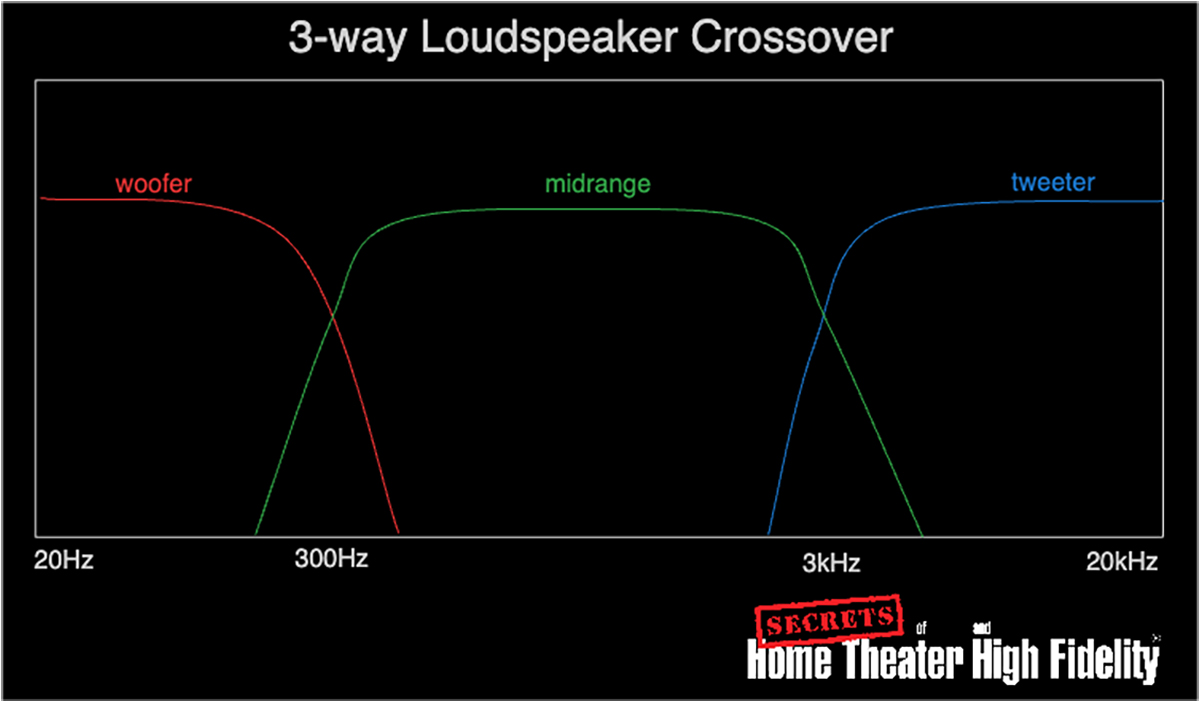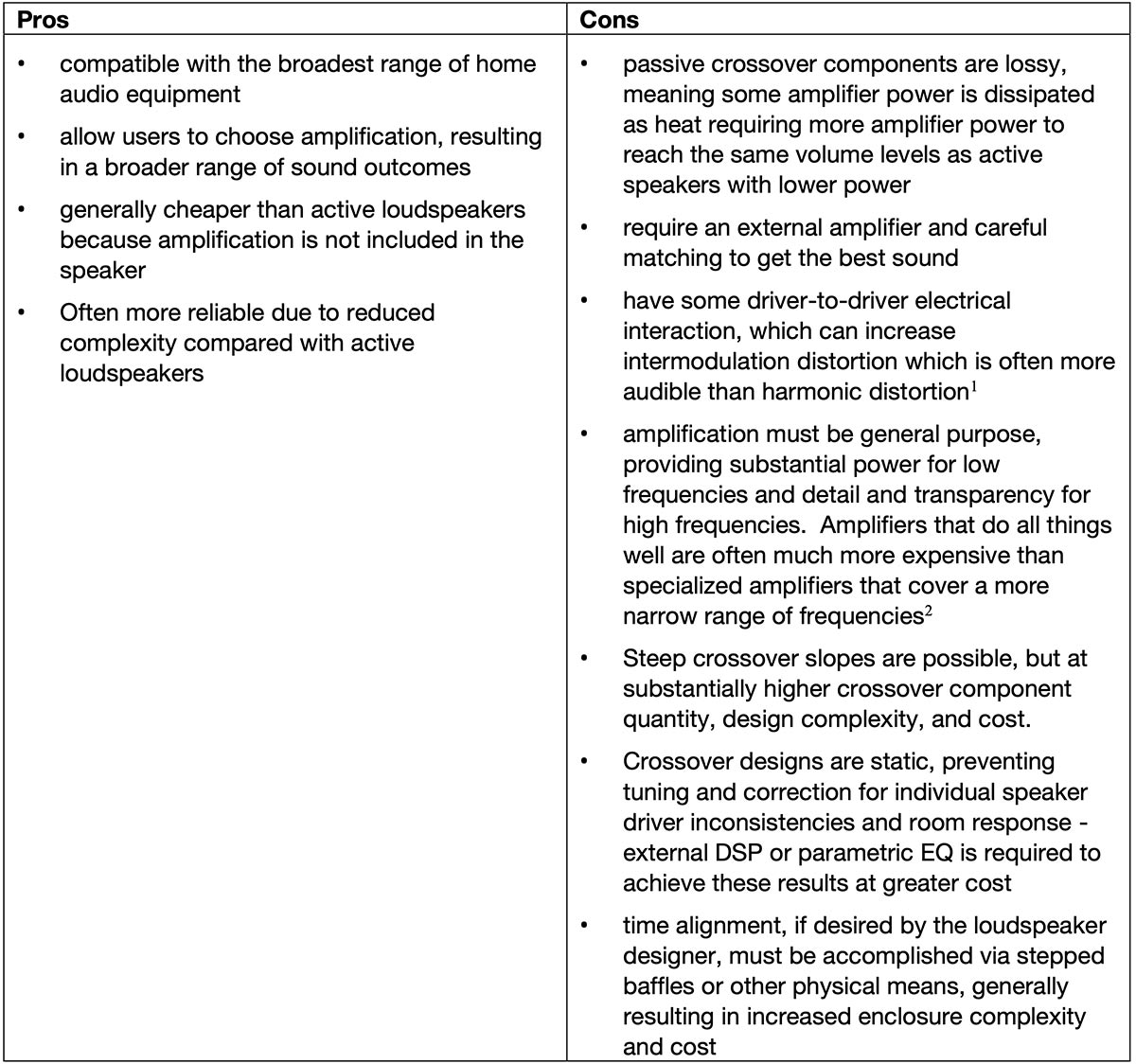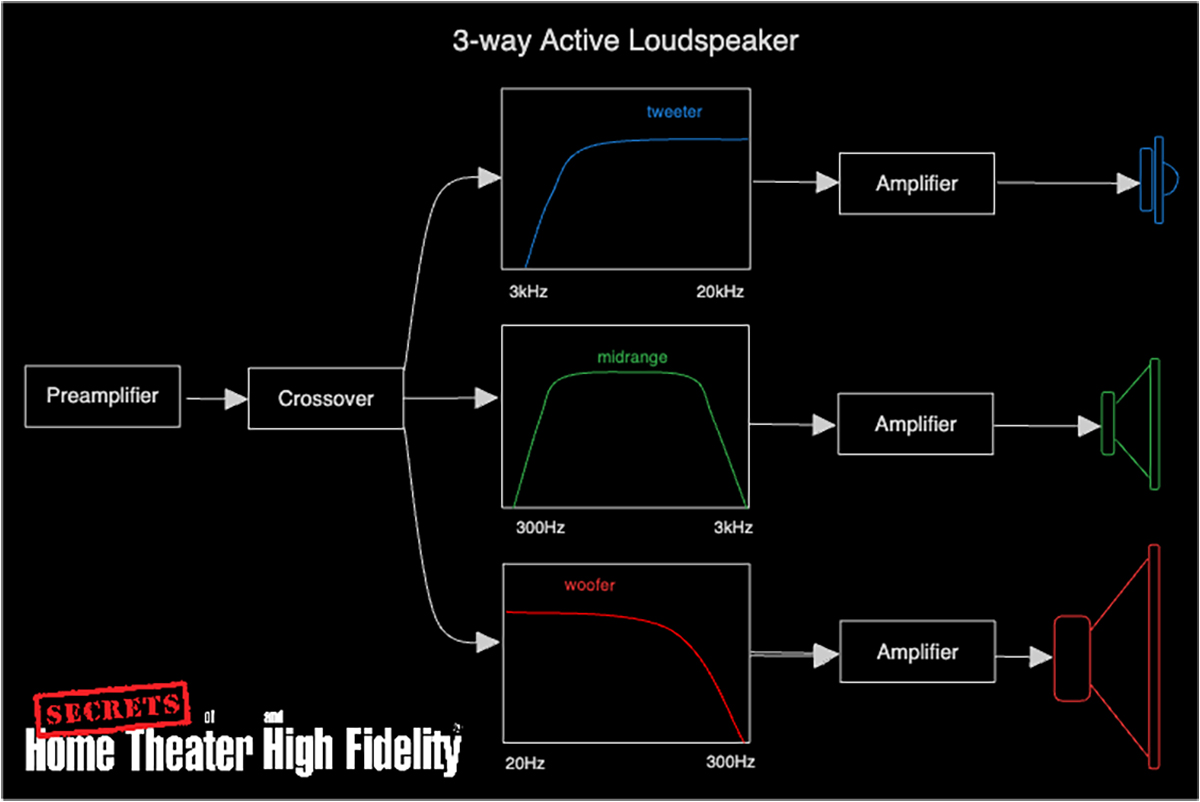Passive loudspeakers comprise the majority of home audio loudspeaker designs because each loudspeaker can be powered by a single amplifier channel from an amplifier or receiver. Since receivers and amplifiers provide speaker-level outputs, passive loudspeakers are compatible with most systems. Passive loudspeakers are called passive because they do not include internal amplification, and in the case of multi-way designs they include “passive” LCR (L=Inductor, C=Capacitor, R=Resistor) crossover networks to separate the ranges of frequencies sent to each type of driver.
The pros and cons of passive loudspeakers:
Secrets Sponsor
Examples of passive loudspeakers reviewed here:
Active loudspeakers are loudspeakers that include internal amplification and take line-level, preamp-level, and sometimes speaker-level signals as input. Some active loudspeakers include digital-to-analog converters (DACs) allowing them to be fed input from a wired or wireless digital source like a computer, mobile device, or network streamer. Like multi-way passive loudspeakers, multi-way active loudspeakers also include a crossover to ensure that each driver is fed the proper range of frequencies for optimal sound reproduction. Crossovers for active speakers can use LCR networks, “active” components like operational amplifiers (op-amps), digital signal processing (DSP), or combinations of one or more types of these devices.
Secrets Sponsor
The pros and cons of active loudspeakers:
Examples of active loudspeakers reviewed here:
- Bamberg Series 3 TMW
- Elac Navis ARB-51
- Dali Rubicon 6C Smart Active Loudspeaker System
- RBH Sound PM-8 Active Studio Monitor
Hybrid loudspeakers are a potential third type of speaker that combines both active and passive elements. It is becoming increasingly common to see manufacturers include amplification for the bass frequencies while allowing speaker-level inputs for higher frequency drivers. This combines the strengths of both active and passive types of speakers, allowing the use of clear, articulate, hand- selected amplification for voices, instruments, and other high-frequency program material while offloading the power-intensive low frequencies to an amplifier that is optimized for driving the bass drivers in the loudspeaker.
Examples of hybrid loudspeakers reviewed here:
1 Interaction effects can be mitigated in passive loudspeakers through bi-amping if the loudspeaker supports it
2 Bi-amping can also help with driver matching, but only if the loudspeaker is designed to allow it







